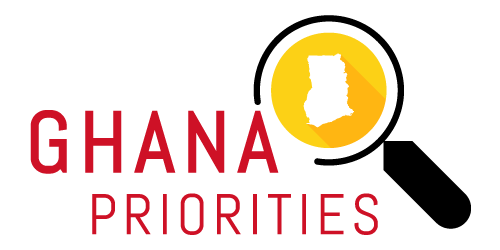Ghana Priorities: Poverty
Technical Report
The Problem
- Poverty remains a problem. There is an overall reduction in national poverty over the last 3 decades, but this masks the persistent spatial concentration of poverty and high inequality.
- National poverty is at 23.4% but unevenly distributed with 7.8% urban poverty and 39.5% rural poverty. In addition, poverty appears to be concentrated in the three northern regions where 50% of households are poor.
- Poverty in the Upper East, Northern Region, and Volta Regions has increased in the last 4 years. Inequality which was at 42% in 2005 is now 43%.
- Poverty and inequality are general problems in the subregion. The spatial concentration of poverty is equally a challenge as well in countries in the sub-region.
Intervention- Poverty Graduation Program
Overview
- The program starts with skills and asset transfers, typically livestock to provide the beneficiary with both the means and knowledge to generate an ongoing, sustainable income. This is followed with a modest cash transfer to stabilize consumption, group coaching to impart life skills, support to build savings, access to or education in health services and community mobilization to integrate the poor into the wider community. The program will be implemented primarily in the three Northern regions and in selected rural communities in Ghana based on their poverty levels.
- It builds on a similar program implemented amongst 666 households in the Northern region of Ghana
Implementation Considerations
- The program will be implemented by the Ministry of Local Government and Rural Development in collaboration with the Ministry of Finance and Economic Planning
- Since the intervention is very costly, around GHc 9,600 per beneficiary, proper targeting of beneficiaries needs to be considered carefully and should be done with the help of the local community
- Competing programs by government or NGOs might diminish the impact of graduation if they provide an incentive for households to abandon the program in favor of superior income-generating opportunities.
Costs and Benefits
Costs
- The total cost per beneficiary is estimated at GHc 9,633 of which 75% accounts for the direct cost (made up of 60.6% covering items as materials, training, professional fees, and 14.5% to cover asset and cash transfer) and the remaining 25% covers the start-up and indirect costs.
Benefits
- The total benefits per beneficiary are estimated to be GHc 17,574. These benefits are solely attributable to consumption gains and asset accumulation. Additional benefits such as food security, political involvement, and mental health are not incorporated into this value.
Intervention - Increased Transfers Under LEAP
Overview
- The program envisages a 7% increase in the stipend provided under LEAP. This would be equal to GHS 160 per year.
- The intervention would be targeted in regions or areas where the cost of living is higher than the average
Implementation Considerations
- The criteria for which beneficiaries are entitled to higher payments needs to be carefully considered, with objective and measurable criteria (such as the location of primary residence).
Costs and Benefits
Costs
- The total cost of increasing the payment is GHc 160 per year per eligible beneficiary
Benefits
- The intervention would lead to a yearly increase in the consumption of GHc 255.
Intervention- Expanding Microfinance
Overview
- The intervention considers expanding microfinance to underserved populations in Ghana. The costs and benefits below consider an average-sized loan of GHc 3920.
Implementation Considerations
- The intervention will be administered and managed by the Microfinance and Small Loans Centre (MASLOC).
Costs and Benefits
Costs
- The total cost of administering the microfinance in year one is given as GHc 1077
Benefits
- The total benefits accruing from the consumer and producer gains amount to GHc 1679
Intervention- Social Housing
Overview
- Two types of housing structures are considered for this intervention. The first is the provision of a two-bedroom semi-detached house built from primarily locally sourced and produced building materials. The second is the building of high rise apartments (one and two bedrooms) to replace improper structures in poorly planned urban areas and slum dwellings. These facilities will be built primarily for the urban poor dwellers who typically live in crowded, improper or slum habitats.
Implementation Considerations
- Ideally, the high rise apartments will be built as in-situ slum redevelopment. However, in cases where slum areas are not deemed fit for residential dwelling, the construction is moved to more environmentally appropriate land environs.
- The intervention will be administered and managed by the Ministry of Works and Housing.
Costs and Benefits
Costs
- The total cost of the interventions are; GHS 229, 265 for a 2 bedroom semi-detached house, GHS 212,185 for a 2 bedroom apartment (high rise) and GHS 162,188 for a 1 bedroom apartment (high rise). For both types of housing structures the cost items are similar and consist of the following; the cost of land, the cost of providing infrastructure (e.g. water and sewerage, electricity, road) the compliance cost, the development cost, and the construction cost.
Benefits
- The present value of the total benefits are approximately GHS 273,000 for a 2 bedroom semi-detached house, GHS 205,000 for a 2 high rise bedroom apartment and GHS 135,000 for a 1 bedroom high-rise bedroom apartment.


